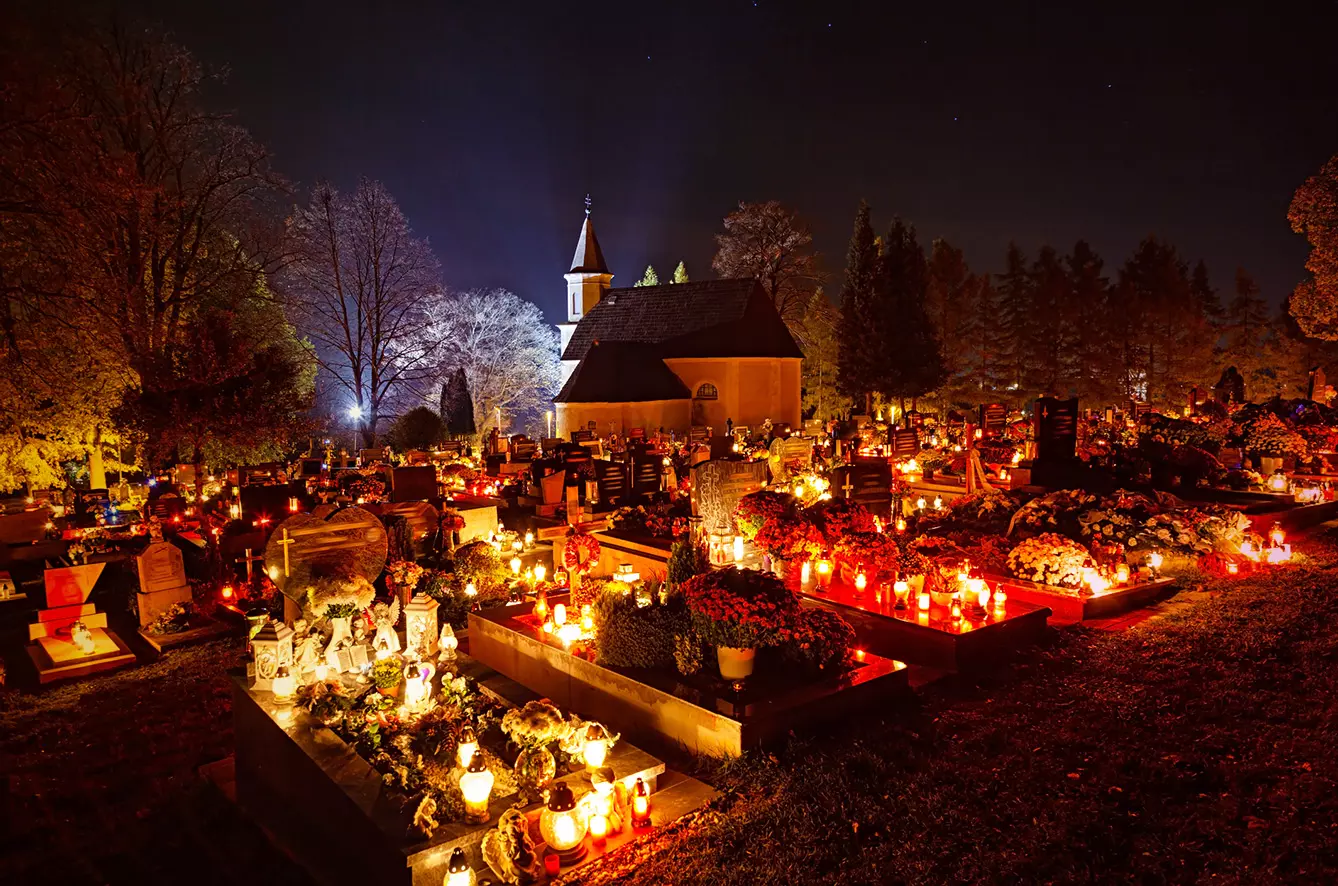At the turn of October and November, many countries formed under the influence of the Christian culture remember their departed – those who are believed to have made it to Heaven, where they reside with God (saints), and those who crossed over. Still, there can be no official confirmation as to whether these souls have reached greener pastures (the faithful).
These days, the Catholic Church differentiates between “the day of the saints” (aka All Saints’ Day) and “the day of the dead” (All Souls’ Day). Devout followers stick to the very religious ceremonies of a mass said at the cemetery, where the two worlds are more visibly mixed for that one particular day in the year. But that’s for the religious. In the face of galloping secularization, how much remains?
All Saints’ Day Festival of Lights
It seems that wherever you travel in Central Europe, on All Saints’ Day, people flock to cemeteries to light a candle on the graves marking the resting place of their loved ones. This goes for both those who see themselves as followers of the Christian religion and those who do not feel strongly connected to the Church. Whether you find yourself in Lithuania, Czechia, Poland, Hungary, Croatia, Austria, or any other Three Seas state around November 1, you are encouraged to visit a cemetery after dark. There are no spirits or ghosts to be seen (probably), just a spectacle of lights that brighten the dark and warm up your heart. It is a night that testifies to the known but often forgotten fact that love never dies, and life merely changes.
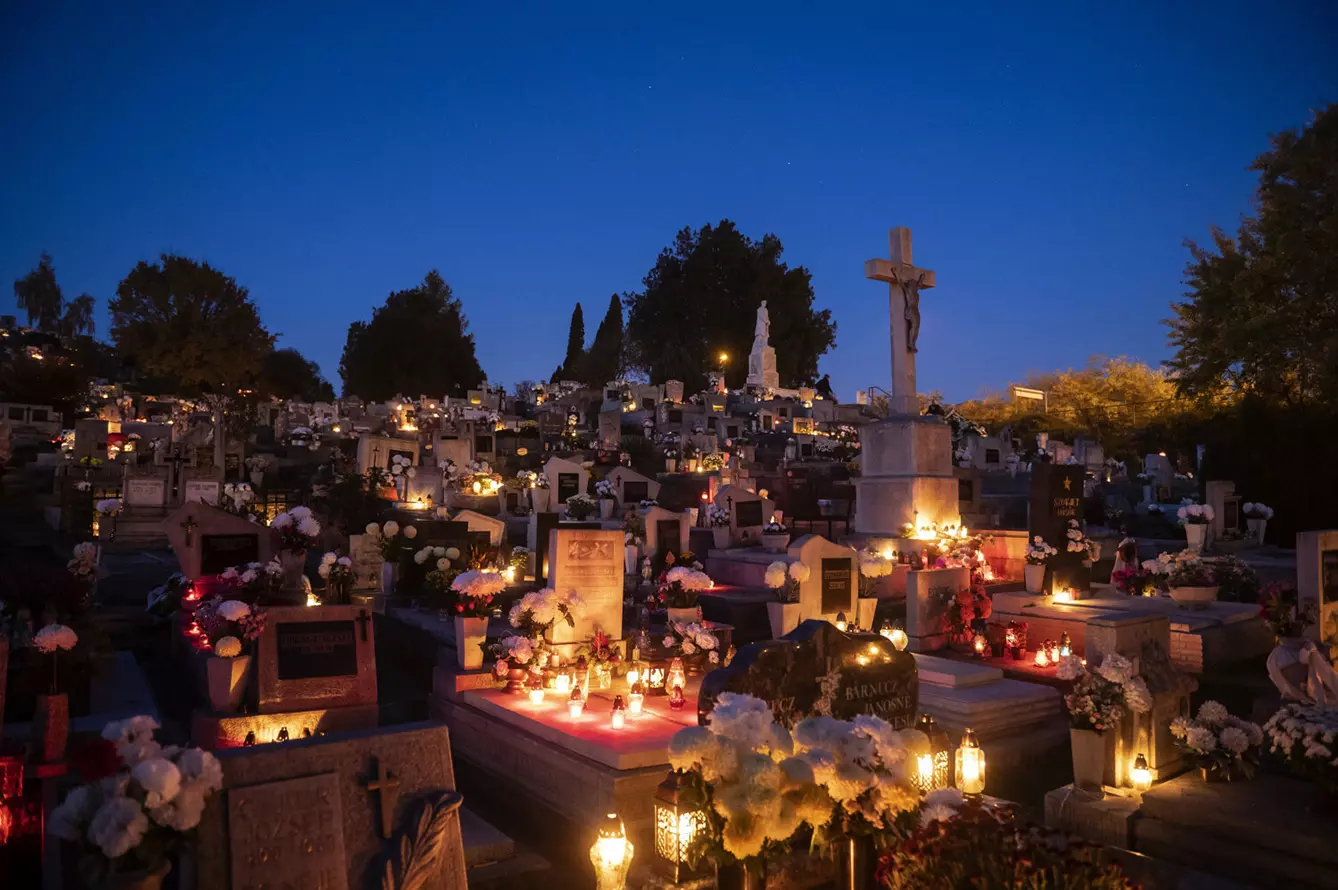
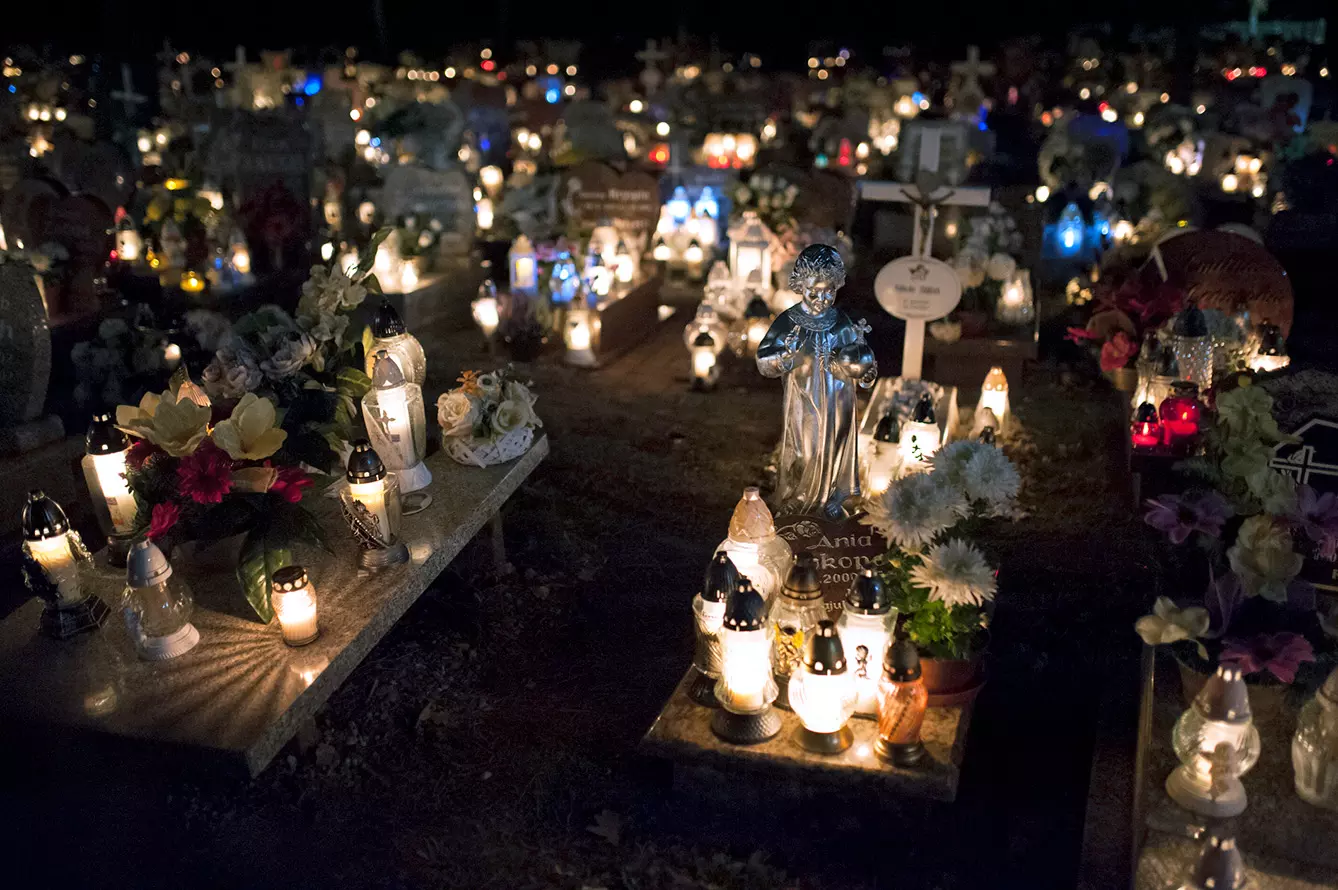
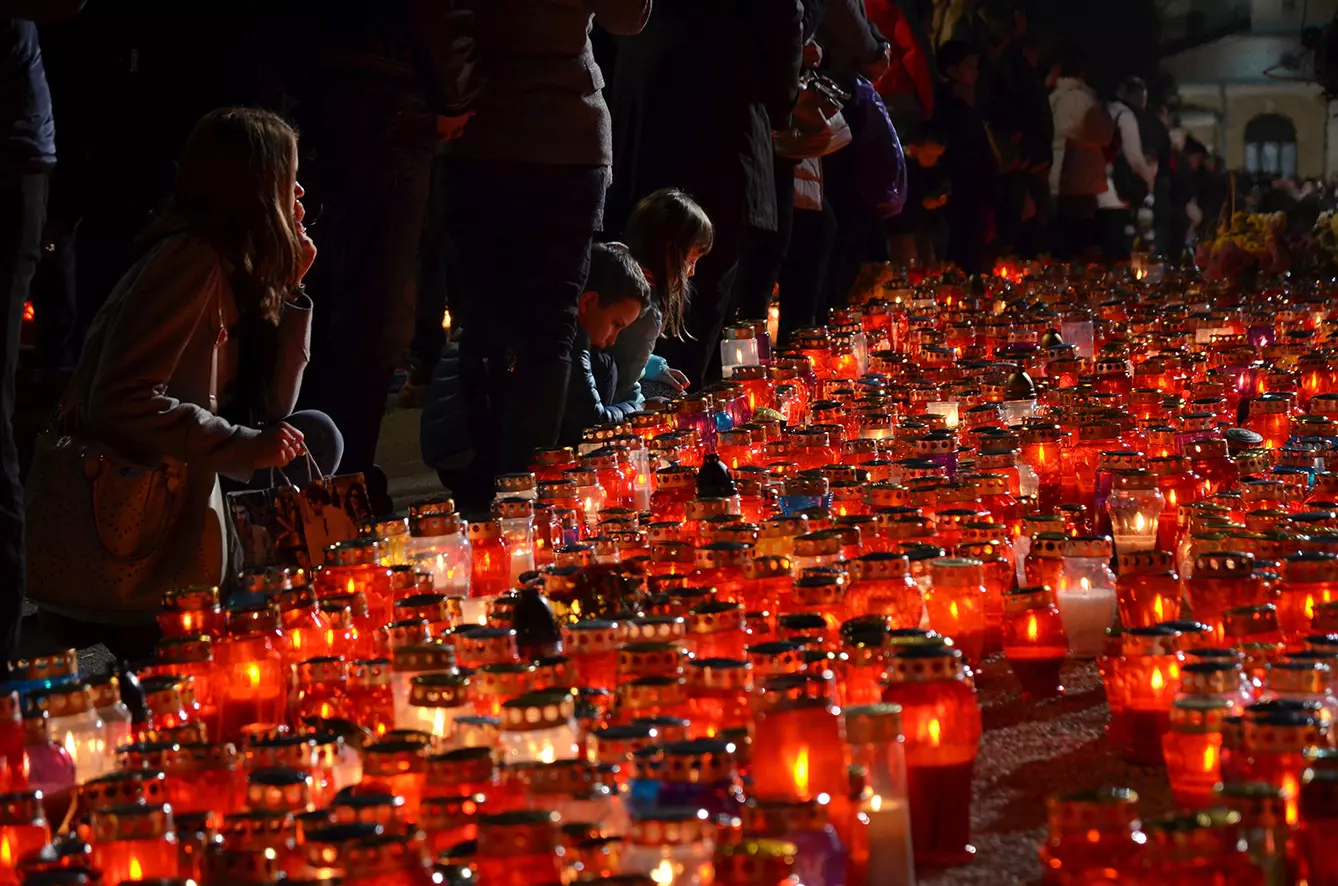
Traditionally, the lights were also used to guide the souls to their old dwellings and resting places. For example, in Estonia, spirits are believed to hold an afterlife family reunion and drop on by their living relatives and friends. The occasion is known in this northern country as hingedeaeg.
All Saints’ Bank Holiday
November 1 is also a bank holiday in many of the Three Seas States. Poland, Austria, Croatia, Hungary, and Slovakia celebrate with a public holiday. Lithuania and Slovenia are unique, as both countries devote two days to celebrations. Slovakia grants an additional public holiday on October 31, and Lithuania lets people rest from work on the All Souls’ – November 2. This time is needed, as most nations meet with their friends and relatives around that time, remembering those who are not with them anymore. The tradition is practiced by Austrians, Poles, and Croatians, to name a few nationalities, who gather together not to mourn but to celebrate the memory of their loved ones and reconnect with the living.
Bulgaria and Romania need to be mentioned separately. Following mostly Orthodox religion, their All Saints’ Day falls on the second Sunday after Pentecost. Additionally, a day of Saint Michael the Archangel All Souls in Bulgaria is celebrated on a Saturday preceding November 8. On that day, people visit the graves of their loved ones, and after cleaning them in preparation for the winter, they pour wine over them (a symbol of Christ’s blood). They can also be seen sitting at the cemetery, eating food, and symbolically feasting with the dead. They also may drink wine, but they mustn’t drink from the same bottle they poured the wine on the graves.
Unique Food Traditions
In many countries, culinary traditions quickly followed the changing celebrations. In Austria, it is customary to bake bread with a slightly sweet and milky flavor, known as Striezel. It is shaped in the form of a braid and was traditionally placed on graves. A gift to the souls who were believed to be released that day from purgatory and allowed to celebrate. Why a braid? It represents an ancient custom of cutting braided hair off a person’s head before burial. Apparently, this historical connotation is widely forgotten about these days.

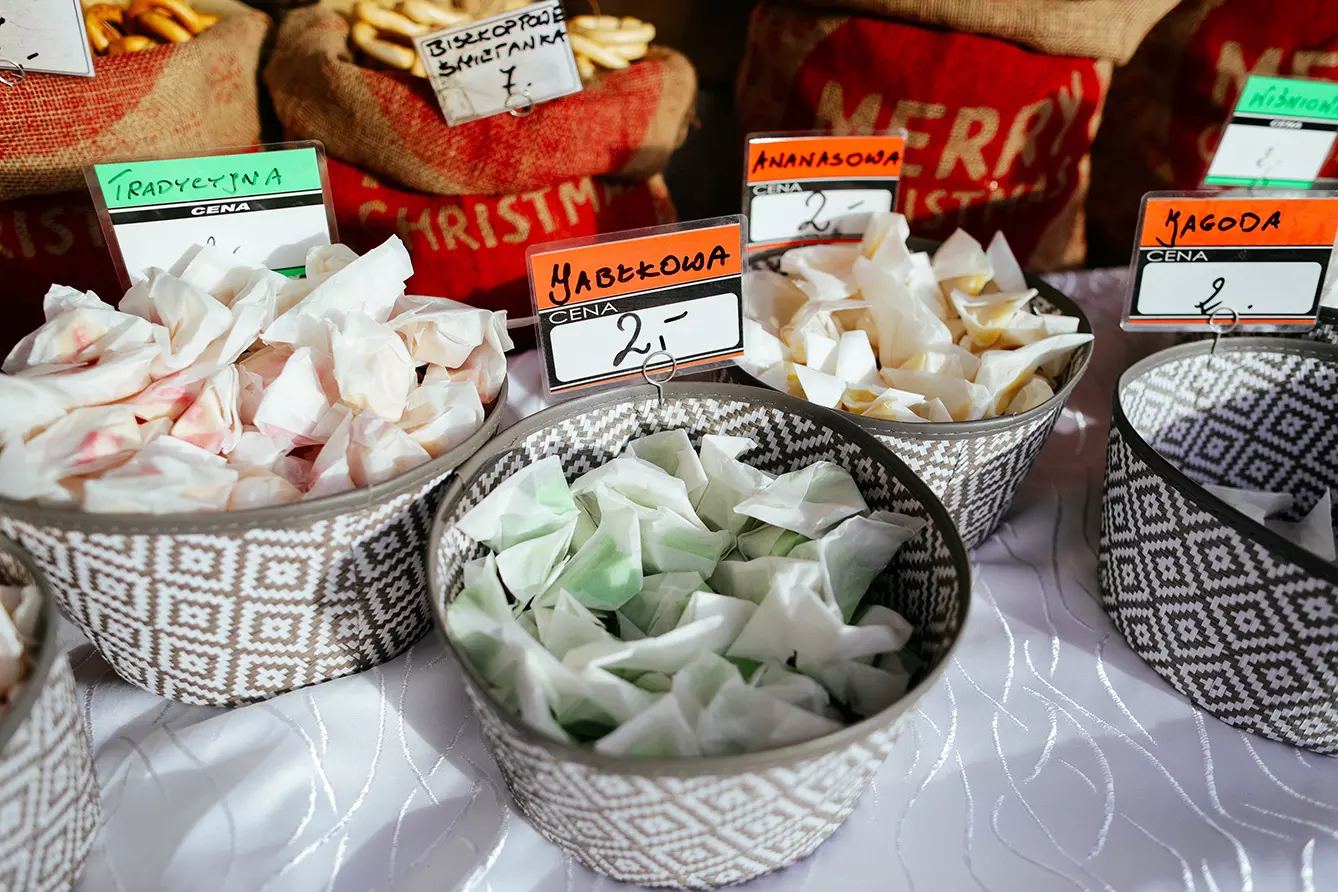
In Poland, small, traditional sweets are offered in certain cities and sold at the entrance to the cemeteries. Probably the most famous one, apart from the krakowskie miodki (nougat sweets popular in Kraków), is pańska skórka – a specialty of Warsaw. A popular translation of its name to the “Lord’s Skin” makes it sound particularly grim, especially when we consider that it is sold to kids entering a graveyard. However, you can rest safe in the knowledge that the name has changed throughout the centuries.
The first official record of the sweet, soft delicacy comes from 1903 and refers to the treat as “panieńska skórka.” It is believed the name played on its smooth texture and pinkish hue – like a smooth skin of a young maiden. I must admit that finding that original connotation did come as consolation, as whenever in Warsaw around All Saints’ Day, I keep my eyes open for these delicious sweets. Their name, the original, playful meaning of which is so widely lost, would admittedly send chills down my spine—just a little.
In most countries, the day would be marked with elaborate feasts (for example, in Estonia, Lithuania, and Croatia), and empty plates are placed on the table for the souls to feast with the living. The feasts might have simplified over the years, but gathering around one table during a shared meal is still a tradition seen alive in many houses.
Pagan Roots
In many cultures, the day before the All Saints’ was the day of the spirits. Pagan rituals were held, such as the Forefathers’ Eve in Poland. The globalization process revives celebrations on that day in the form of Halloween; however, not many stop to ponder over where Halloween originated in the first place.
The root of pagan rituals, later replaced with the Catholic answer to celebrating the memory of the departed, was pretty much the same in all countries as Halloween. For example, the popular jack-o-lanterns were carved (originally in turnips rather than pumpkins) to deter any evil spirits from the household. The day is, therefore, of significance and relevance if we are to understand how and why we arrived at our current traditions.


